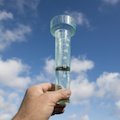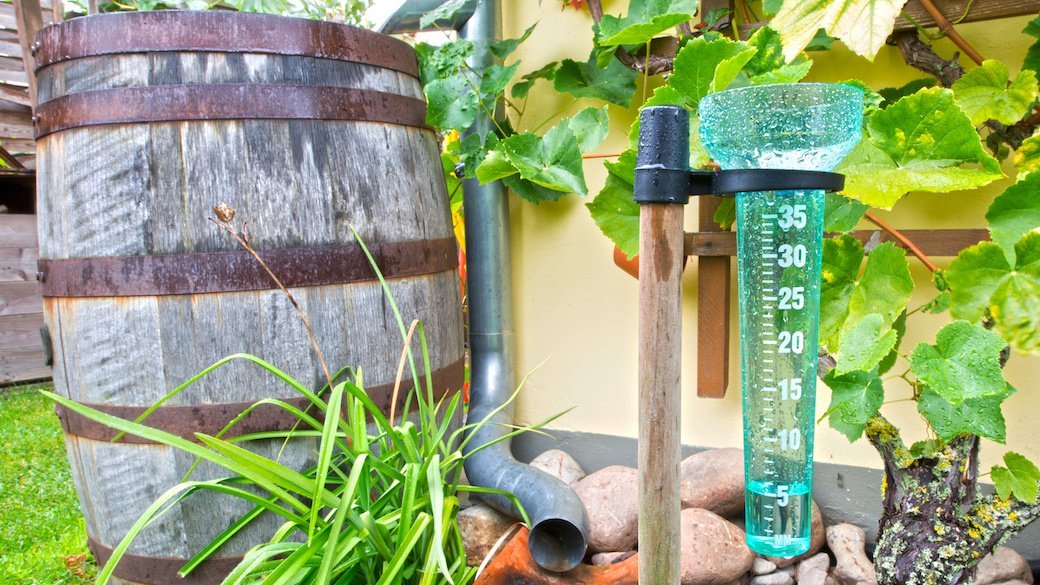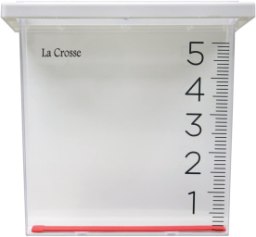Buying guide for best rain gauges
The forecast called for it to pour all night long. And it did — maybe. The driveway is wet this morning, and puddles line the street. But how much rain really fell? Enough to turn off your sprinklers or skip a day watering your garden? You could check the weather station, but it will only tell you how much rain they got at the airport or another landmark. Just because it rained an inch there doesn’t mean it did at your house.
A steady downpour can be a homeowner’s best friend. It lets you cut back on lawn watering, and in turn, your water bill. It can save gardeners time and effort watering their vegetables. But only in the right amounts. If you guess too low, you risk overwatering, wasting money and putting plants at risk for root rot. If you estimate too high, you’ll get stunted veggies, brown spots on your lawn, and unpleasant notices from the homeowner’s association.
Either way, it’s a gamble — unless you have a rain gauge. Rain gauges measure exactly how much rain you get at your location. You set them up in your yard or near your garden to learn how much rain fell in a given period.
Key considerations
Increments
If you’re buying a rain gauge for fun, precision isn’t all that important. But if you’re using your data to make watering decisions, you need something more accurate. Quality rain gauges measure in increments of at least a quarter inch. If you’re watering vegetables or for commercial operations, look for one that measures hundredths of an inch.
Volume
Your climate plays a role in the size of rain gauge you’ll need. Some arid regions get about a foot of rain annually. In those regions, a smaller gauge measuring five inches should work. Wetter regions, however, require rain gauges measuring 6 to 12 inches.
Frequency
It’s also important to think about how often you’ll check your rain gauge. Gardening hobbyists and professionals may look every day. Homeowners will probably check once or twice a week. If you’re likely to get more than five inches of rain in a week, look for larger models.
Mounting
It’s tempting to attach your rain gauge to your house or a tree, but you shouldn’t. Large structures like these can block rain from entering the gauge’s mouth or can collect extra rainwater from drips. Look for gauges that can be mounted to a deck or fence top, or ones that are mounted on stakes.
Ease of use
The best rain gauge to buy is the one you’ll use.
-
Look for gauges with large numbers numbers that can be read from a reasonable distance if you have vision challenges.
-
Make sure gauges mounted on a stake are not too short or tall to read comfortably.
-
Pick a gauge that’s secure but easy to remove and replace. If you spill before reading, you’ll have inaccurate numbers. Struggling to replace it can bend the stake or crack your gauge’s reservoir.
Expert Tip
Need to read your rain gauge from indoors? Look for models with floating bobbers to give you a quick read from a distance.
STAFF
BestReviews
Features
Design
Basic cylindrical rain gauges are good for measuring rainfall totals during slow, steady rains. They’re less reliable during windy downpours. They’re also more prone to clogging than other designs. Some cylindrical rain gauges are outfitted with funnel tops or walls that catch collect rain when it’s gusty. This ensures more accuracy and helps prevent clogs.
Wedge-shaped gauges are often more accurate since their wide tops help to catch blowing rain. Many taper at the bottom so that smaller rainfall increments take up more visual space, making them easier to read. This feature is preferable in drier climates, but may be unnecessary in wetter regions.
Materials
Since visual clarity is key, most rain gauges are made from plastic or glass. Both have advantages and disadvantages.
Plastic gauges are usually less expensive. They can be exposed to ultraviolet rays and temperature extremes. Still, plastic rain gauges often deteriorate over time, though they don’t shatter if they hit the ground.
Glass gauges often last longer than plastic models because they better resist sun damage. However, they are heavier and may not survive a fall.
Mounting options
Many gauges attach to a fence or deck post using hardware or mounting brackets. Metal fixtures are usually more durable than plastic ones, as long as they don’t rust. If you want metal fixtures, make sure they’re made of rust-free material. Plastic brackets, on the other hand, won’t rust, but they aren’t as sturdy.
Other gauges are simply staked in your yard. Metal stakes are more durable than plastic options, but you need to find one that’s rust-free. Make sure the stake you choose is tall enough for you to read comfortably.
Depending on your needs, you may also wish to consider:
-
Magnification to make the numbers easier to read
-
Water level bobbers that are easily read from a distance
-
Mesh tops that help prevent debris
Did you know?
The water level may appear curved in some rain gauges. To get an accurate reading, measure from the base of the curve.
STAFF
BestReviews
Rain gauge prices
You can find inexpensive rain gauges for $5 to 10. Some basic models dip below the $5 price point. At this price, rain gauges are plastic without special treatments to increase readability or longevity. They get the job done, but there’s no telling how long they’ll last.
Mid-grade rain gauges cost between $10 and 20. They’re made of glass or plastic, and plastic models may be treated to increase their longevity. They should be at least six inches long, and have multiple options for hanging.
High-end rain gauges usually cost more than $20, and are sometimes as high as $50. Rain gauges in this price range should hold 10 to 12 inches of rain and have a wide mouth that tapers to ensure accurate readings. They may be glass or plastic, and plastic models should be treated for longevity against temperature and sun exposure.
"A good, weather-resistant rain gauge can also be used to measure snow. While heated rain gauges work best for snow, any device can measure the precipitation once it melts. In most cases, ten inches of snow equals about one inch of rain."
STAFF
BestReviews
Tips
-
Don’t wait too long after a storm to check your rain gauge. If the water starts evaporating, it can give you a false reading.
-
If knowing precise amounts of rain is critical to your livelihood, consider getting two different shapes of rain gauges for extra accuracy.
-
Don’t attach rain gauges to trees — blockage from limbs and extra drips from trees can affect their accuracy.
-
If you are mainly concerned with lawn watering, you may wish to buy a set that comes with a sprinkler gauge to find out how much water your lawn is getting.
-
Lawns may need two inches of water per week in areas where daytime temperatures regularly exceed 90 degrees.
-
If the top two inches of garden soil is dry, it’s time to water.
Other products we considered
If easy reading is a deal breaker for you, check out this magnifying rain gauge from AcuRite. Its high-contrast colors and 35% magnification make it a great choice for those with vision challenges. Just keep in mind it only holds five inches of water.
The LaCrosse Waterfall Rain Gauge simplifies the process for the busy family. It has several mounting options, but it’s well-loved because it’s easy to mount to a deck. Its large digits and bobbing red marker make it easy to read at a glance from a window.
FAQ
Q. How often should I check my rain gauge?
A. Ideally you should check your gauge every day, especially if you’re gardening. Younger plants take time to develop deep roots, so several waterless days can be disastrous for them. Grass, however, needs an inch or two of water per week depending on the temperature, so ignoring the gauge for a day or two isn’t as bad for your lawn. Still, you shouldn’t go more than a week without checking.
Q. Where should I place my rain gauge?
A. Mounting your rain gauge to a house or tree is convenient, but don’t do it. Walls and tree limbs can skew readings by blocking the rain or catching drips. If you use your fence, make sure you attach it near the top. To get the most accurate readings, measure the tallest object in the area and place your gauge twice that distance away from it. You’ll also need to find a place where the gauge is relatively sheltered from the wind.
Q. How much water does my lawn really need?
A. It depends on your soil and climate. Grass planted in thick soil in a temperate climate will need less water than turf planted in sandy soil in a hot climate. Usually, grass needs about an inch of water per week. That need rises to two inches per week if the temperature consistently hits 90° or more. If you need to water, do it for a longer period once or twice a week rather than every day. Short daily watering encourages shallow roots that don’t need to dig for moisture. It’s also best to water in the morning or evening, when the air is more moist and cool, so the water won’t evaporate in the air or in the top layer of soil.


























